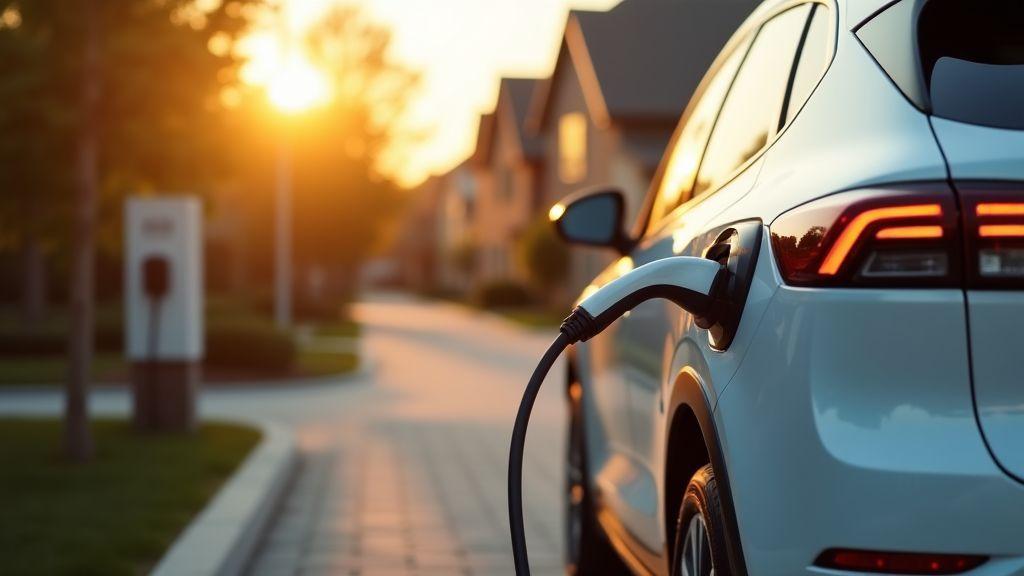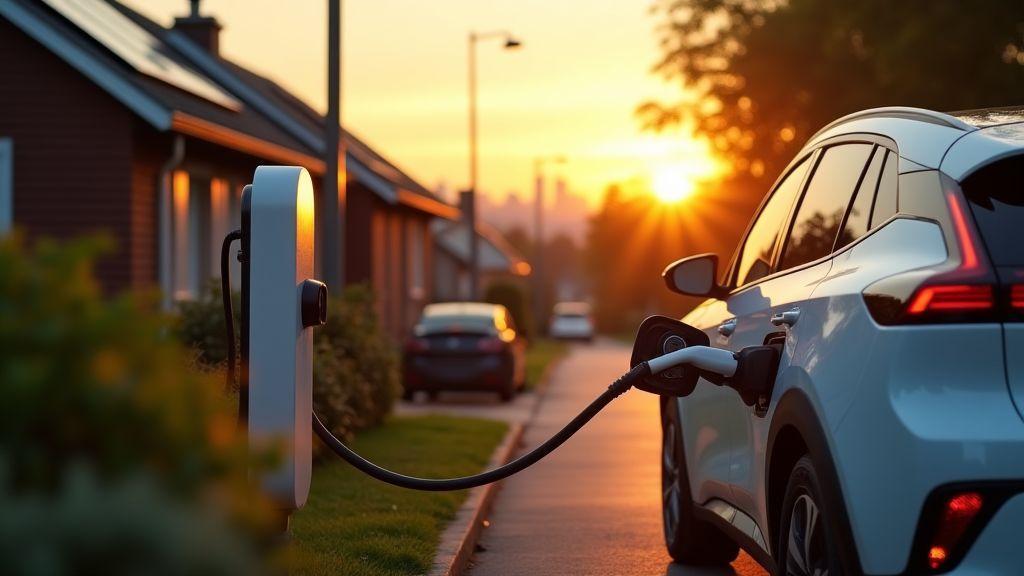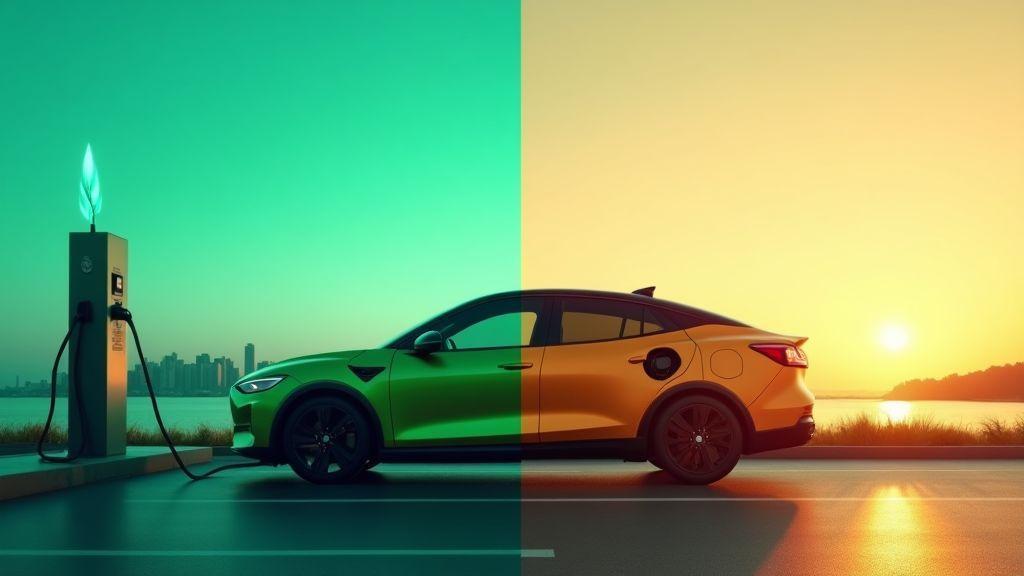Pros and Cons of Plug-in Hybrids Explained
You will get a clear, practical guide to how plug-in hybrids save fuel and perform in city and highway driving. This article—Pros and Cons of Plug-in Hybrids Explained—covers the pros and cons for your daily commute, quick tips to track fuel use, simple charging basics for home and public stations, what you’ll pay over time, emissions facts, easy ways to ease range anxiety, and a short maintenance checklist to protect resale value.
Key Takeaway
- You lower fuel costs by using the electric range.
- You still rely on gas for long trips.
- You pay more up front but may save later.
- You can charge at home to cut emissions.
- You face more complex maintenance and battery concerns.

How you can save fuel with plug-in hybrids
Plug-in hybrids let you drive on electric power for short trips and switch to gas for longer runs. If your daily commute is within the battery range and you charge at home overnight, you can use almost no gas. Simple habits—use EV mode around town, coast into stops to maximize regenerative braking, avoid heavy acceleration, and preheat/precool while plugged in—boost savings.
Track costs by comparing electric miles to fuel miles on your trip meter and logging charging costs versus gas receipts. Use official tools to Compare fuel economy and MPGe ratings and model savings. Many drivers cut monthly bills and pump visits with small, consistent changes.
PHEV fuel efficiency comparison for city and highway
PHEVs often shine in city driving where short trips use EV range and MPGe ratings look high. On the highway, long distances rely more on the gasoline engine, so MPG matters. Typical figures:
| Scenario | Typical electric range | Typical city efficiency | Typical highway efficiency |
|---|---|---|---|
| Short city trip (mostly EV) | 20–40 miles | 80–120 MPGe | N/A (electric) |
| Mixed commute (battery gas) | 20–40 miles | 40–60 MPGe equivalent | 35–45 MPG combined |
| Long highway trip (gas only) | 0–20 miles left | 30–40 MPG equivalent | 30–40 MPG |
Plug-in hybrid pros and cons for your daily commute
Pros and Cons of Plug-in Hybrids Explained: you get a two-mode car that can feel like an electric for quick trips and a gas car for long hauls. Charge nightly and short commutes can be almost all-electric, lowering fuel bills and local emissions. But the battery adds weight and cost, and if you forget to charge you’ll use more gas than expected.
Top things to weigh:
- Charge daily for big savings (Pro).
- Higher purchase price and weight (Con).
- Great for short commutes, less for long highway-only drives (Mixed).
Quick tip for tracking your PHEV fuel use
Reset your trip meter after charging and keep a short log: electric miles, gas liters used, and charging cost. Use the car app or a simple note on your phone; after a few weeks you’ll see patterns and cut fuel use.
What you will pay over time for a plug-in hybrid
A plug-in hybrid changes your cost mix: higher upfront price for battery and extra tech, but lower gasoline spending if you use electric miles. Total cost depends on sticker premium, gasoline and electricity use, maintenance, depreciation, and incentives.
| Cost element | Plug-in hybrid (typical) | Gas car (typical) |
|---|---|---|
| Upfront price premium | $2,000–$8,000 higher than similar gas model | Baseline |
| Annual fuel / charging | $400–$1,200 (depends on electric miles) | $1,200–$2,000 |
| Annual maintenance | $300–$700 | $400–$900 |
| Incentives/tax credits | $0–$7,500 (varies by model/state) | $0 |
How much you pay depends on your routine. Short-trip drivers who charge at home often recoup the premium faster; long-distance drivers may not.
Cost of owning: purchase, fuel, and charging
Sticker shock often comes from the battery and extra hardware. Check federal/state credits and dealer incentives before buying, and review our terms of use for guidance on site policies and offers. See Federal plug-in vehicle tax credit details for eligibility and documentation. Charging at home is usually cheaper per mile than gas, but public fast chargers can cost more. If you rarely plug in, the battery becomes extra weight without benefits.
Key cost categories:
- Purchase/financing
- Energy (fuel and electricity)
- Maintenance & repairs
- Depreciation & incentives
Compare upfront price and long-term savings
Break-even commonly occurs in 3–6 years for many drivers, but it varies with mileage, electricity rates, and incentives. Use online calculators (EPA fuel-economy, Edmunds True Cost to Own, manufacturer tools) plus local utility rates and incentive sites to model your case.

How plug-in hybrids affect emissions and what you can do
Plug-in hybrids cut tailpipe emissions when you run on battery power—near-zero local exhaust pollution for short trips. When the gas engine runs, emissions return, so real-world benefits depend on usage and the electricity source. Battery production also creates upfront carbon. Charge from cleaner grids and favor EV mode for short runs to maximize climate gains. This is central to Pros and Cons of Plug-in Hybrids Explained: the technology helps, but your choices determine the outcome. For official guidance on emissions and PHEV benefits, see How plug-in hybrids affect emissions.
Environmental impact: tailpipe and lifecycle facts
Tailpipe emissions fall to near zero in EV mode, improving local air quality. Lifecycle emissions include battery manufacturing and electricity generation; cleaner grids and frequent EV use spread the upfront battery cost over many electric miles.
| Emission source | Short-term effect | Long-term note |
|---|---|---|
| Tailpipe (EV mode) | Near zero | Keeps local air cleaner |
| Tailpipe (ICE mode) | High | Matches conventional cars |
| Battery production | Upfront CO2 | Spread over lifetime miles |
| Electricity generation | Varies by grid | Cleaner grid = better outcome |
Benefits and drawbacks for air quality
Benefits appear where people live—reduced smog and soot when daily errands switch to EV mode. Drawbacks occur if the gas engine runs often or electricity is coal-heavy; upstream emissions or battery production can shift impacts elsewhere.
Ways to lower your vehicle’s environmental impact
- Charge when the local grid is cleaner or during off-peak times tied to renewables.
- Use EV mode for short daily trips and reserve gas for long drives.
- Keep tire pressure and filters in good shape.
- Remove unneeded roof racks or heavy cargo.
- Plan for battery recycling or repurposing when it ages.
Where and how you will charge a plug-in hybrid
You can charge at home, work, or public stations. Most owners plug in at home nightly, keeping daily driving mostly electric. Plug-in hybrids have smaller batteries than full EVs, so full charges often take hours, not days. Level 1 (120V) usually suffices overnight; Level 2 (240V) is faster.
Charging patterns shape your driving: easy home access encourages EV miles, while reliance on public chargers requires more planning. The DOE offers practical guidance — Home and public charging basics explained — including station locators and home installation tips. For a broader set of resources and practical guides, see our home page.
Home charging basics and cost estimates
Level 1 (standard outlet) is often enough for PHEVs; Level 2 speeds top-ups. Example math: a 10 kWh battery at $0.13/kWh costs about $1.30 per full charge. A basic Level 2 charger costs a few hundred dollars; installation varies.
| Charger type | Typical battery (kWh) | Typical full charge time | Estimated cost per full charge |
|---|---|---|---|
| Level 1 (120V) | 8–12 kWh | 6–12 hours | $1.00–$1.50 |
| Level 2 (240V) | 8–12 kWh | 2–4 hours | $1.00–$1.50 |
Public charging networks and how they affect use
Public chargers include workplace, retail, and highway stations. Most are Level 2; some DC fast chargers exist but are rarely needed for PHEVs. Apps and maps show availability and pricing (by time, kWh, or session). Plan routes, pick accessible chargers, and be considerate at public stations. Also check app permissions and our privacy policy when sharing location or payment details.
Simple charging checklist
- Check your car’s battery kWh and typical full-charge time.
- Decide Level 1 or Level 2 at home; get installation quotes.
- Set a nightly charging schedule during off-peak hours.
- Install or download at least one public-charger app.
- Carry the car’s charging cable and any adapters.
- Be mindful of charging fees and time limits at public stations.

How driving feels for you and handling range anxiety
Electric mode is quiet with instant torque; at stoplights you’ll feel brisk acceleration. On highways the engine may join, offering smooth power delivery. Range anxiety varies—short-route drivers often forget about gas, long-trip drivers plan stops. Pros and Cons of Plug-in Hybrids Explained highlights this trade-off: lower local fuel use versus occasional planning for longer runs.
Range anxiety: causes and key facts
Uncertainty about electric distance drives anxiety. Temperature, speed, heater use, and infrastructure affect range. Most PHEVs provide 20–50 miles EV range—great for errands but not long trips. Combined gas electric range typically exceeds 300 miles, which offers backup confidence.
| Typical plug-in fact | What it means for you |
|---|---|
| EV-only range: 20–50 miles | Good for daily errands and short commutes; may not cover long trips |
| Combined range with gas: 300 miles | Gives peace of mind for long drives |
| Home charging overnight | Most convenient and keeps battery topped up |
Switching between electric and gas mode: what you will notice
Transitions are usually smooth; the engine may start under heavy acceleration or low battery. Instrument clusters show battery use and engine status; some cars let you hold battery or force EV mode. Learn those controls to shape your driving.
Tips to reduce range anxiety
- Charge overnight and top up regularly.
- Learn your car’s real-world range in different conditions.
- Use apps to find chargers and keep a buffer in routes.
- Build simple routines so the vehicle feels reliable rather than stressful.
How to manage maintenance, warranties, and resale value
Treat the battery like a major appliance: regular checks, sensible charging, and organized service records. Follow the manufacturer schedule for both electric and gas systems. Warranties transfer risk—keep paperwork and service invoices to reassure buyers.
Battery lifespan and warranty facts for PHEVs
Battery life varies; many PHEV batteries keep useful range for a decade or more. Heat, deep discharges, and rapid cycles speed wear. Manufacturers commonly warranty batteries for about 8–10 years or 100,000 miles; replacement costs vary widely.
| Item | Typical warranty | Typical expected useful life | Typical replacement cost (ballpark) |
|---|---|---|---|
| PHEV battery | 8–10 years / 100k miles | 10–15 years or 150k–200k miles | $2,000–$8,000 (varies by model) |
Resale trends and long-term cost of owning a PHEV
Resale has improved as batteries proved durable and warranties lengthened. Demand depends on local fuel prices, tax credits, and charging access. Owners can save long-term if they charge often and drive short trips—regenerative braking also reduces brake wear. But remember you maintain two powertrains, which adds parts and potential repairs.
Maintenance checklist to protect resale value
- Keep a single folder (paper or digital) of service records, warranty paperwork, and charging logs.
- Follow the manufacturer service schedule for battery coolant, engine oil, filters, and brakes.
- Monitor battery health during service visits and get diagnostic scans before selling.
- Charge at moderate rates; avoid frequent high-speed charging and deep discharges.
- Install software updates at dealerships or authorized shops.
- Replace worn tires, bulbs, and wipers.
- Keep interior and exterior clean; address rust or paint chips promptly.
- Consider a transferable extended warranty if you plan to sell soon.
If you’d like personalized help estimating costs, warranties, or service networks, reach out via our contact page.
Conclusion
Pros and Cons of Plug-in Hybrids Explained: a plug-in hybrid can be an electric car for short hops and a gas car for long hauls. Use the electric range and charge nightly to see real fuel cost reductions. Expect a higher upfront cost, added weight, and some maintenance complexity; break-even depends on your commute, electricity rates, and incentives.
Your climate impact depends on use—emissions fall when you drive on battery and charge when the grid is cleaner. Driving feel is often pleasant—quiet and quick off the line—and range anxiety fades with routine and apps. Protect value with warranty care and organized service records to boost resale.
Weigh the trade-offs against your daily patterns: if short trips dominate and home charging is easy, a PHEV can save money and emissions. For further guides and resources, visit our home page.

